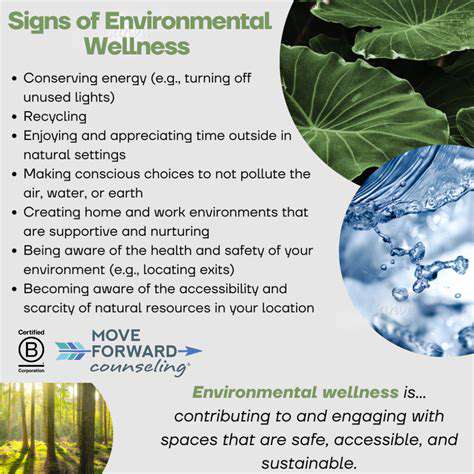How to keep your dog’s coat shiny and healthy
Think of protein as the building blocks for your dog's hair. Without enough quality protein, their body can't produce strong, healthy strands. It's like trying to build a brick wall without enough bricks - the structure just won't hold up. This is why protein-deficient diets often lead to brittle, broken hair that lacks vitality.
High-Quality Protein Sources
The protein source matters just as much as the amount. Real meat proteins (chicken, beef, fish) contain complete amino acid profiles that processed fillers simply can't match. Always check the first few ingredients - if you see meat meal or vague terms like animal protein, you might want to reconsider that brand.
The Role of Vitamins and Minerals
While protein and fats get most of the attention, micronutrients play crucial supporting roles. Zinc deficiency, for example, can cause dry, flaky skin and hair loss. Biotin (a B vitamin) has earned its reputation as a coat vitamin for good reason - it helps strengthen hair at the cellular level.
Considering Your Dog's Specific Needs
A puppy's dietary needs differ dramatically from a senior dog's requirements. Growing dogs need more calories and specific nutrients to support their developing coats, while older dogs often benefit from adjusted protein levels. This is why annual vet checkups are so important - nutritional needs change over time.
The Impact of Hydration
Water might seem unrelated to coat health, but it's actually the delivery system for all those wonderful nutrients. Even the best diet won't yield results if your dog isn't drinking enough. Watch for subtle signs of dehydration like dry nose or loss of skin elasticity - these often show up in the coat's condition before more obvious symptoms appear.
The Importance of Regular Grooming
Brushing Benefits
Regular brushing does more than just remove loose hair - it stimulates the skin much like a massage stimulates human circulation. This increased blood flow brings more nutrients to hair follicles, resulting in stronger, healthier growth. For long-haired breeds, proper brushing prevents painful mats that can actually tear skin if left unchecked.
Grooming sessions also provide valuable bonding time and allow early detection of potential health issues. Many owners have spotted early signs of skin conditions, parasites, or even tumors during routine brushing.
Choosing the Right Brush
The brush aisle at pet stores can be overwhelming, but choosing correctly makes all the difference. A mismatched brush can actually damage coat texture over time. For example, using a slicker brush on a short-haired breed might irritate their skin, while a bristle brush won't effectively detangle a Collie's thick undercoat.
Bathing and Drying
Overbathing is one of the most common grooming mistakes. While humans shower daily, dogs' skin produces oils at a different rate. Bathing too frequently strips these protective oils, leading to dry, itchy skin and brittle hair. When you do bathe, always use lukewarm water - too hot can cause discomfort, too cold won't effectively clean.
Dietary Considerations
No amount of grooming can compensate for poor nutrition. Even with perfect brushing technique and bathing schedule, a malnourished dog will never achieve optimal coat health. This is why many professional groomers keep nutritional supplements in their salons - they know external care only goes so far.
Ear and Nail Care
While not directly related to coat health, neglecting ears and nails creates overall discomfort that affects how dogs carry themselves. A dog with overgrown nails or infected ears won't enjoy grooming sessions, making coat maintenance more difficult. Regular attention to these areas creates a more positive grooming experience overall.
Dental Hygiene
Surprisingly, dental health connects to coat condition. Chronic oral infections create systemic inflammation that can manifest in skin and coat problems. Many dogs with persistent skin issues see improvement after addressing dental problems they've been silently enduring.
The Role of Bathing in Coat Health
Importance of Regular Bathing
Bathing removes more than just dirt - it eliminates environmental allergens, dead skin cells, and excess oils that can clog pores. However, the key is finding the perfect frequency for your individual dog. Too often causes dryness, too infrequently allows buildup that leads to odor and irritation.
Choosing the Right Shampoo
Human shampoos disrupt the delicate pH balance of canine skin. Dog formulas are specifically designed to clean without stripping essential oils. For dogs with sensitive skin, oatmeal-based shampoos can provide relief from itching while gently cleansing.
Proper Bathing Technique
Always start brushing before the bath to remove loose hair and tangles. Wet the coat thoroughly - shampoo won't lather or clean properly on dry spots. Work from neck down, saving the head for last to minimize shaking. Use your fingers to massage the shampoo down to the skin rather than just scrubbing the surface.
Drying and Post-Bath Care
Thorough rinsing is crucial - leftover shampoo residue causes irritation. For thick coats, consider a vinegar rinse (1 tablespoon per quart of water) to restore pH balance. When drying, blot rather than rub to prevent hair breakage. If using a dryer, keep it moving and test the heat on your inner wrist first.
Bathing Frequency and Considerations
Active dogs who love mud puddles may need weekly baths, while indoor companions might only need monthly cleaning. Always consider water temperature, shampoo choice, and drying method based on your dog's individual needs. Senior dogs often benefit from warmer water and gentler products.
Avoiding Common Bathing Mistakes
Never use human hair products, avoid getting water in ears (cotton balls can help), and always check water temperature. Rushing the rinse is perhaps the most common error - take your time to ensure all product is removed. Finish with a thorough brushing to distribute natural oils through the clean coat.
